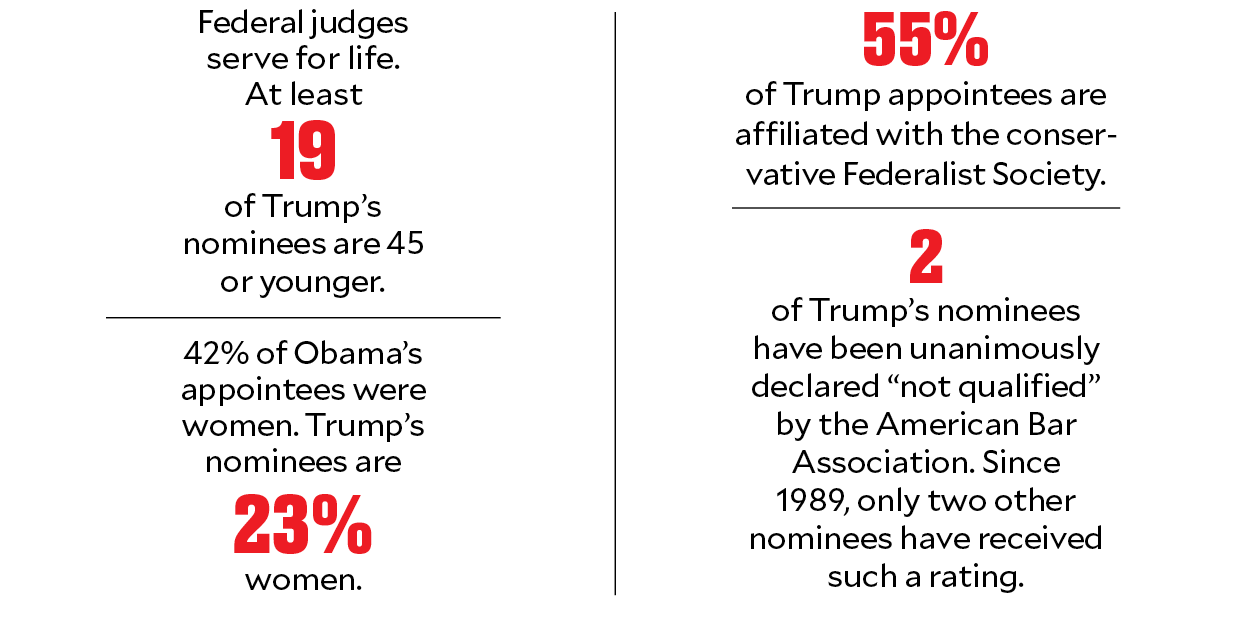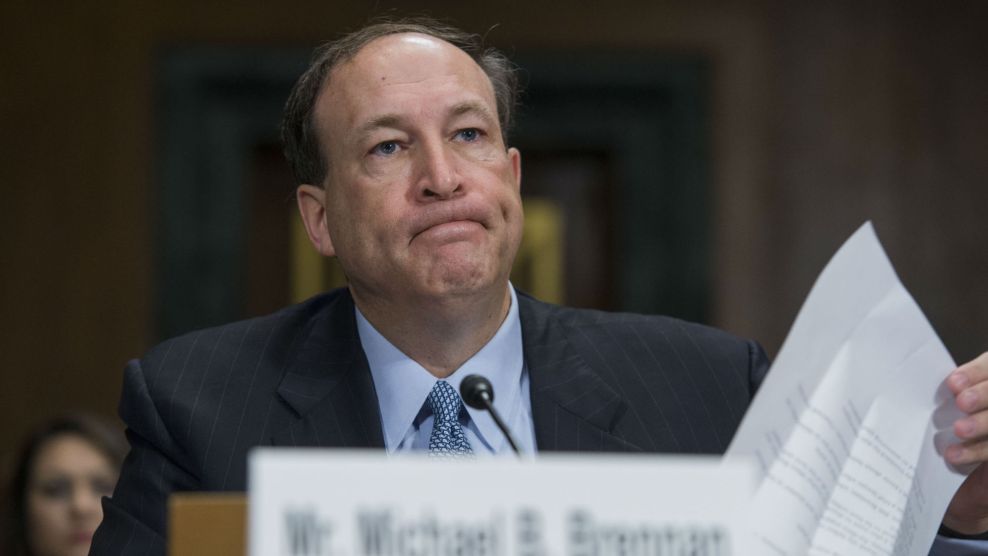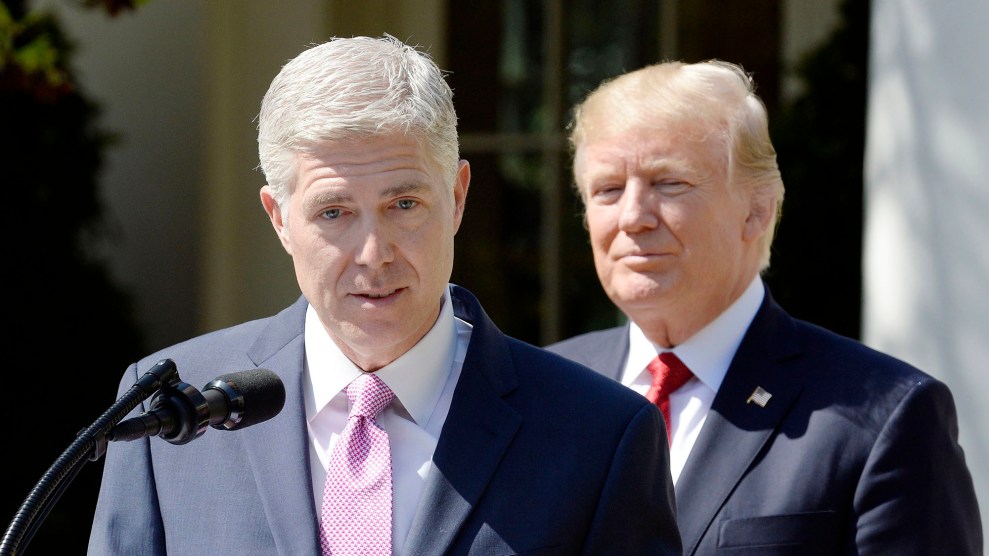
President Donald Trump shakes hands with Supreme Court Justice Neil Gorsuch following an April swearing-in ceremony.Carolyn Kaster/AP
Senate Republicans spent the end of Barack Obama’s term running out the clock on his picks for federal judges. (Remember Merrick Garland?) So when Donald Trump took office, he faced a nearly unprecedented number of vacant judgeships—and an opportunity to roll back gains in diversity and remake the federal courts for decades.
Trump has taken full advantage of the opportunity. In the first year of his presidency, he nominated 69 federal judges, more than any president since Reagan. A record-breaking 12 were appeals court judges. Since the start of the new year, Trump has nominated nearly two dozen more judges.
In total, 71 percent of Trump’s nominees have been white men—a fact that has not slipped past Democratic senators and liberal watchdog groups. “It’s long past time that the judiciary starts looking like the America it represents,” said Sen. Chuck Schumer (D-N.Y.), in a recent speech on the Senate floor. “After years of improvement, the Trump administration—like in so many other areas—is taking a giant step backward, this time, when it comes to the diversity of their nominations.”
Federal judges serve for life and are rarely impeached. The numbers Mother Jones compiled show a president who is working hard to cement a judiciary, and a legacy, that will last long beyond his term.

Sources: American Bar Association, American Bridge, Alliance for Justice, Federal Judicial Center, US Courts, US Senate, and Russell Wheeler of the Brookings Institution’s Governance Studies Program
















